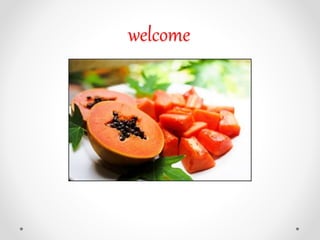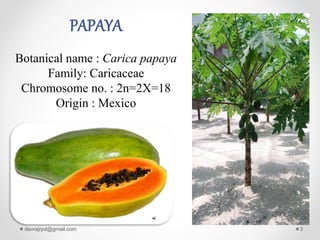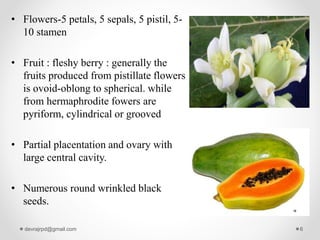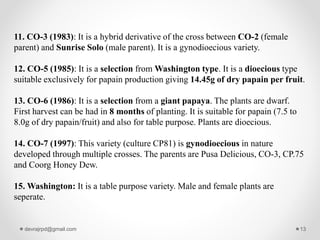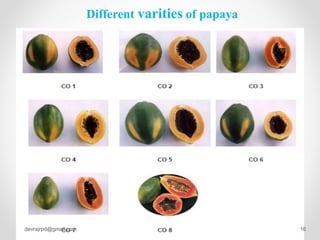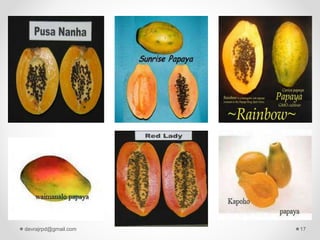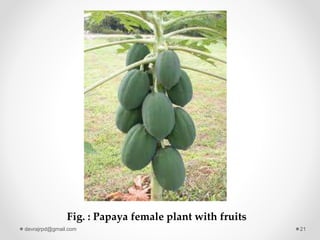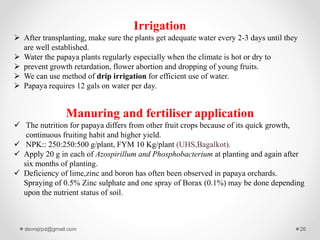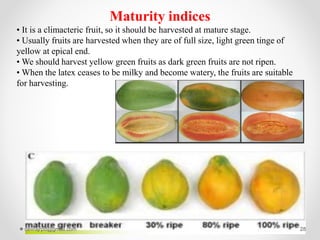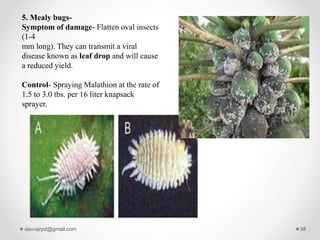This document provides information on papaya cultivation practices. It discusses the botanical details of papaya, including its origin, taxonomy, botany, and floral biology. It also outlines recommendations for climate and soil requirements, common varieties, propagation methods, land preparation, planting density, and cultural practices for papaya cultivation. The key points covered include papaya's origin in Mexico, its dioecious and gynodioecious forms, suitable climate and soil conditions, commonly grown varieties in India, and seed propagation.
